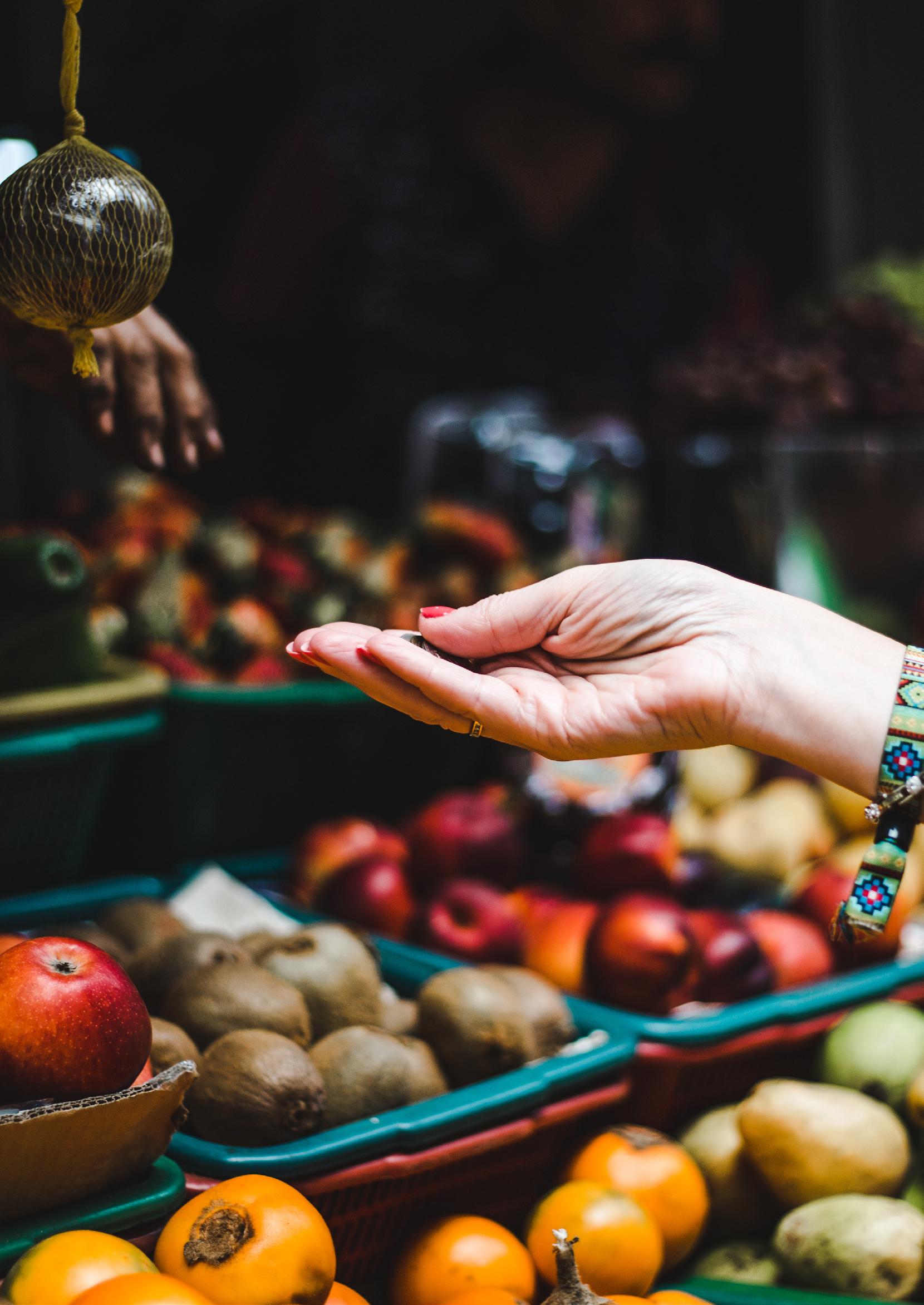
4 minute read
A taste of the tropics The culinary traditions of Central America
by Rob Ellison
Frequently overshadowed by their neighbours to the north, south, and in the Caribbean Sea, Central America is experiencing a culinary renaissance. From your boutique luxury yacht, you’ll have the opportunity to experience a delicious culinary journey and it’s right there for the tasting.
When worlds collide
The nations of Central America occupy the tapering isthmus that separates the Pacific Ocean from the Caribbean Sea. Here, continents converge, a vivid societal mix shapes culturally rich societies, and the terrain is amongst the most biodiverse on the planet. All of this has helped form a gastronomic ‘hot spot’ with Central American cuisine now capturing the attention of the world at large. The region’s geography, topography, and climate provide a great variety of available ingredients then used in creating dishes of indigenous and colonial culinary traditions.
Panama
Panamanian cuisine is amongst the most diverse in Latin America. A fusion of traditional indigenous and colonial influences intermingle with flavours from the country’s thriving expatriate community. The nation’s tropical climate produces many local fruits, vegetables, and herbs used in native cooking—and Panama’s unique geographical positioning gives the country access to a large variety of available ingredients.

Hojaldres
Hojaldres are a Panamanian breakfast staple. A round flatbread made from a simple dough that, once fried, produces a crisp, airy pastry. Introduced to Panama from Spain, hojaldres originally contained flour received from the Moors. Today, hojaldres are made without yeast, favouring baking powder as a leavening agent. Hojaldres are often topped with cheese or served alongside salchichas guisadas, a sausage stew used as a dip.
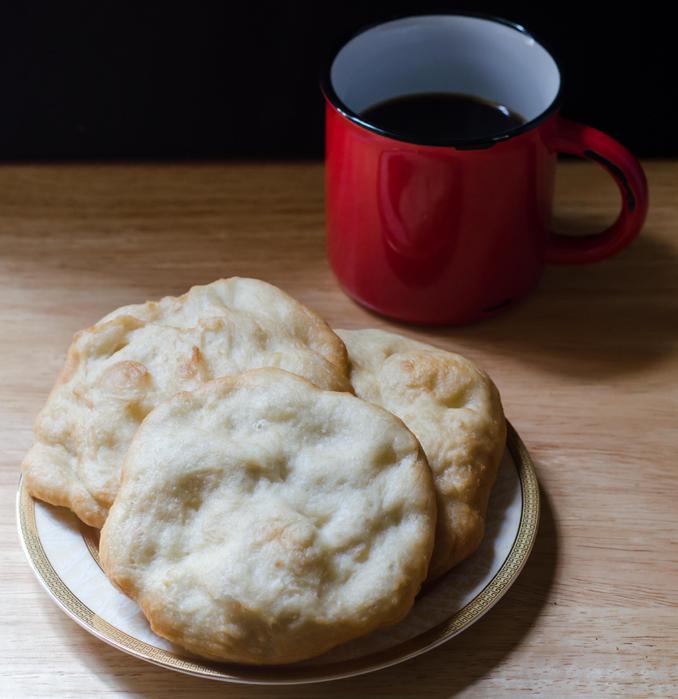
Tamal de olla
Tamal, or tamale, is a Mesoamerican dish popular throughout the region. Tamal de olla, unique to Panama, differs from neighbouring tamale, being prepared as a casserole and not wrapped in the leaves of a banana or yuca plant as is regionally typical. Tamal de olla, (meaning; tamal of the pot/pan), is thus named for the large casserole dish it’s baked in. Ingredients include cuts of pork or chicken stuffed with cornmeal, a variety of vegetables, raisins, olives, and capers.
Chicheme
Chicheme is a drink found almost exclusively in Panama and neighbouring Costa Rica, consisting of condensed milk, hominy, cinnamon, and vanilla. Chicheme is, unsurprisingly, renowned for its sweetness. The primary ingredient is maíz pilado, dried corn kernels crushed in a mortar and left to soak overnight. Finally, before removing the pot from the heat, sugar is added to lend the beverage even greater sweetness.
Costa Rica
Don’t allow the simple ingredients of Costa Rican cuisine to trick you into thinking the nation’s culinary landscape is uninspired. The variety of dishes and the versatility of ingredients make Costa Rica’s culinary scene exciting and frequently unexpected, with finely balanced flavours and a blend of influences. After enjoying the local dishes, don’t forget to sample the nation’s most prodigious export, coffee.
Gallo pinto
The national dish of both Costa Rica and Nicaragua, gallo pinto, is a blend of cooked and fried rice, beans, herbs, and vegetables. The origins of the dish are fiercely debated, with Costa Ricans claiming that gallo pinto came from the suburb of San Jose sometime in the 1930s. Nicaraguans claim gallo pinto was brought to the Caribbean shores long before—and that gallo pinto is of African origin. There are also minor discrepancies in preparation. In Costa Rica, gallo pinto uses black beans, and in Nicaragua, red beans. Meat or eggs accompany the dish in both nations, and undoubtedly both countries agree on the significant import of the cuisine.
Casados
Casados is a Costa Rican favourite, and another dish featuring much-loved beans. This is a versatile dish consisting of chicken, beef, or fish with salad or coleslaw. As with much of Central American cuisine, side dishes and optional ingredients accompany casados. In Costa Rica, you’ll frequently see casados paired with avocado, potatoes, tortillas, and plantain.

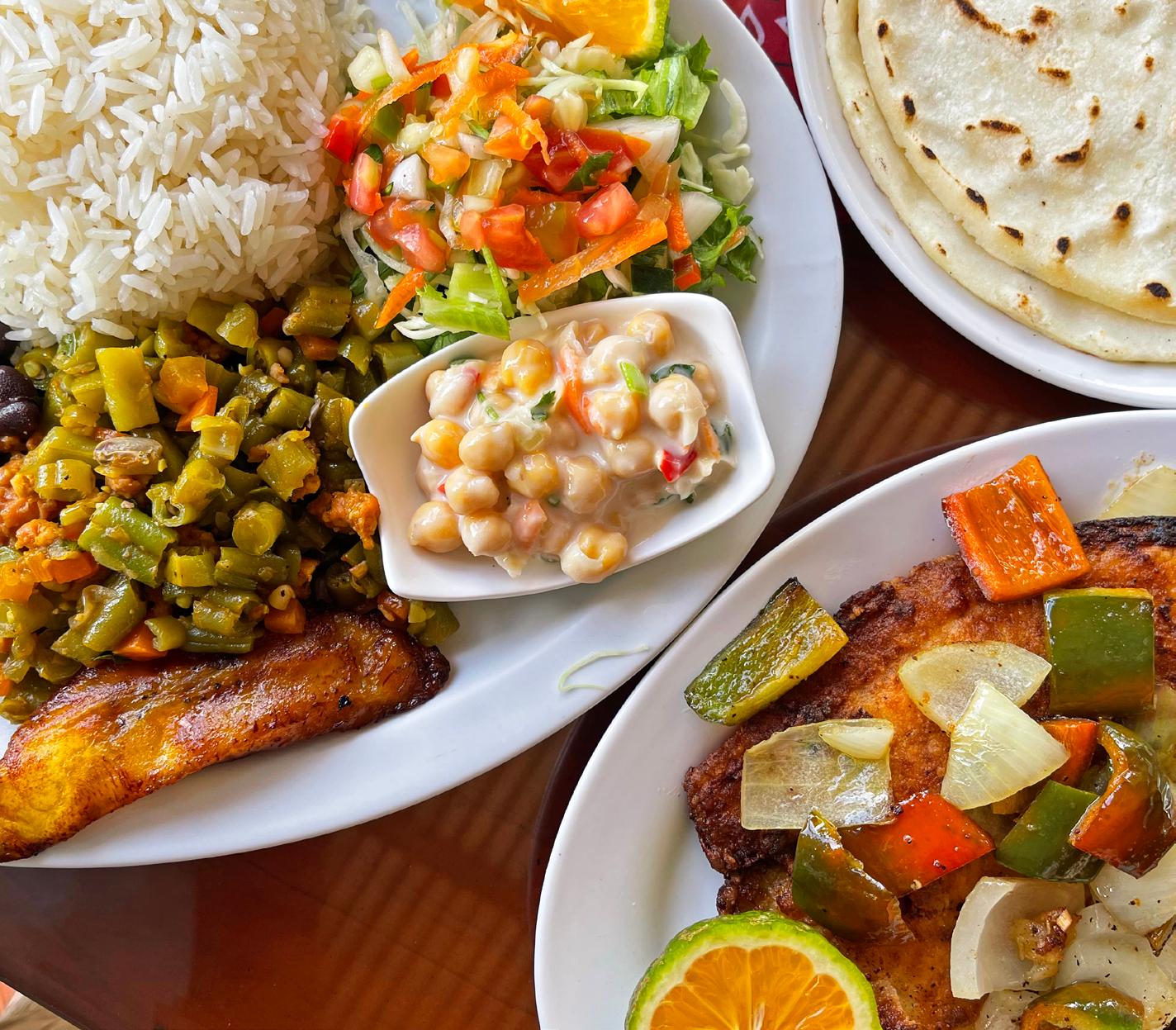
Chorreadas
Chorreadas are corn pancakes prepared as either sweet or savoury. Traditionally, this simple staple consists of just one ingredient: corn. Today, you’ll find variations of the chorreada made with flour or eggs. A favourite breakfast food, chorreadas are often served with a spoonful of sour cream.
Colombia
The culinary tradition of Colombia is one rooted in localisation. The Pacific, Amazonian, Andean, Orinoco, Caribbean, and Insular regions constitute the nation’s culinary landscape, and regional flavours depend upon the availability of produce and ingredients. In Colombia, traditions and influences intermingle seamlessly, with indigenous, Spanish, and African heritage impressed upon many of Colombia’s favourites.
Lechona
Lechona is a traditional, communal dish consisting of a roasted pig stuffed with various herbs, spices, and vegetables. Gradually prepared over a long period, the pork is slowly roasted and tenderised before being served. Often served in times of national festivities and personal celebration, lechona can create upwards of 100 portions. Beyond the festivities, you’ll find lechona in the restaurants of all major cities across Colombia.
Bandeja paisa
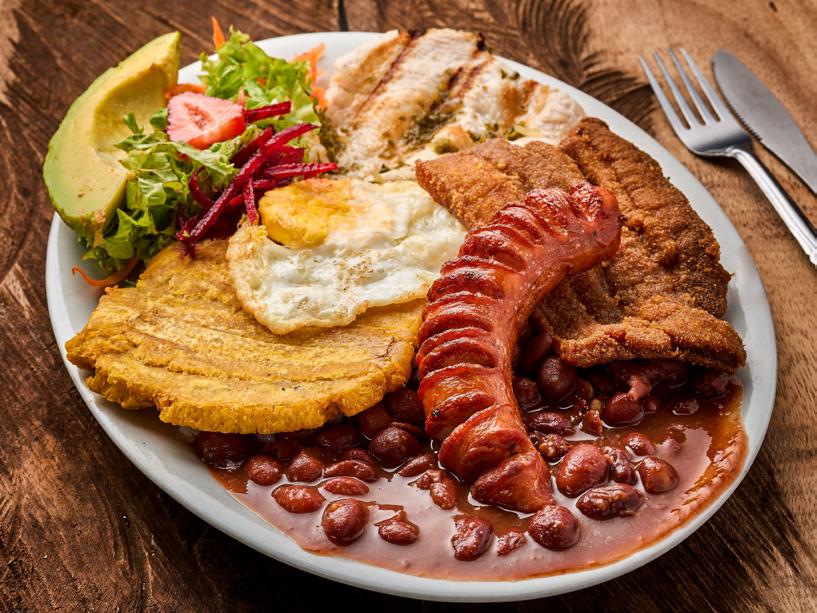
Colombia’s national dish, bandeja paisa, originated amongst the rural communities of Colombia to supply agricultural workers with enough nutrients to last the day. This calorific platter makes for a hearty lunchtime meal of over 13 key ingredients, including chorizo, beef, pork belly, avocado, red beans, plantain, white rice, and fried eggs to top it off.
Obleas
Obleas are thin, round wafers of Colombian origin, served as either a savoury snack or a sweet treat. Arequipe, a caramel spread, lines the wafers before being topped with cheese, jams, or fruits. Obleas are a favourite street snack sold by food vendors throughout Colombia. When ordering, you’ll typically choose from a wide range of fillings.
Sampling regional delights
There’s a wealth of culinary delights awaiting you in Central America, from hearty staples to sweet desserts and refreshing drinks. Alongside the favourites included in this list, you’ll uncover many hidden gems and local flavours when exploring the region from the comfortable base of your luxury yacht. Join us in the Caribbean from this November to March 2024.
TAKE ME THERE...
Discover the flavours of Colombia, Panama, and Costa Rica for yourself with an Epic Voyage throughout Central America.
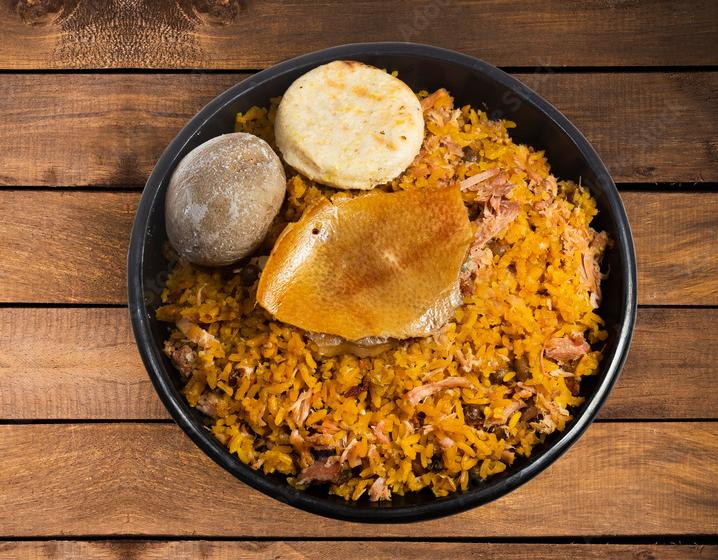
19-day Discover Southern Caribbean & Central America
Puntarenas to Bridgetown
Visit emeraldcruises.com.au to find out more











